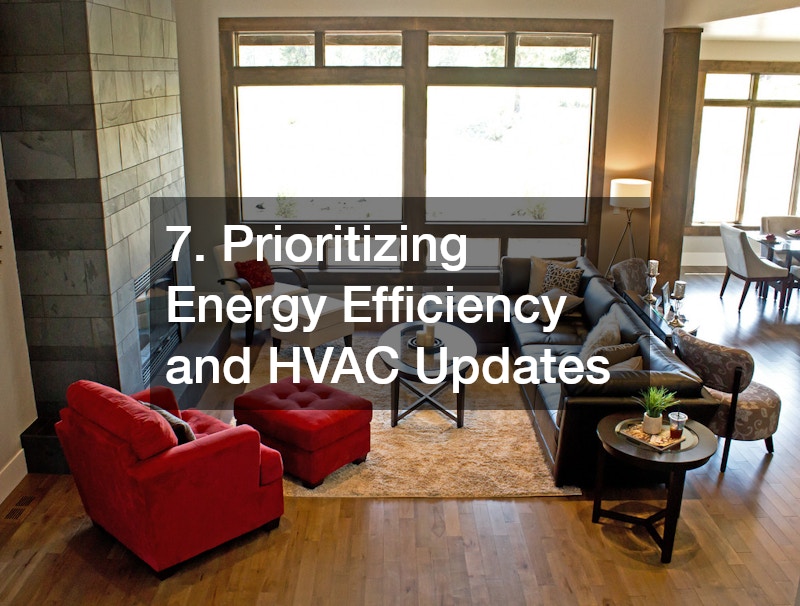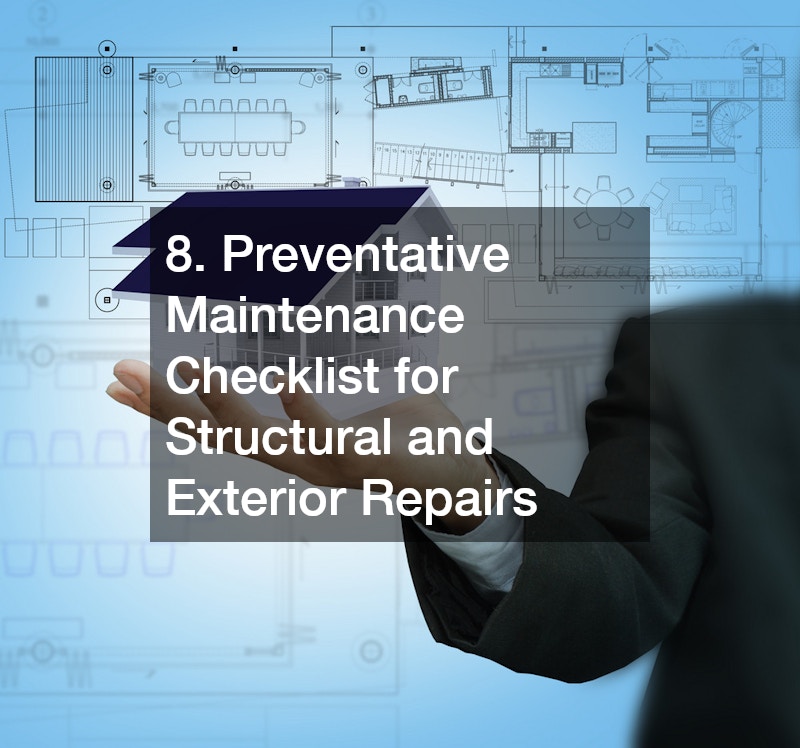Embarking on a home renovation is exciting. From fresh paint and modern fixtures to new flooring and cabinetry, the possibilities for transforming your space are endless. But before diving into the fun, aesthetic updates, it’s crucial to take a step back and focus on the essential repairs that form the backbone of your home. Ignoring these critical repairs can lead to costly surprises down the road, compromise your family’s safety, and reduce the overall value of your property.
Prioritizing foundational and structural issues, roofing concerns, water management, and essential systems ensures that your renovation is built on solid ground—literally. It’s not just about preventing damage; addressing these repairs upfront saves money in the long run, preserves your home’s integrity, and avoids disruptive emergency fixes later.
This guide offers a practical, step-by-step approach to critical home repairs, giving homeowners the confidence to tackle renovations wisely. Whether you’re a first-time renovator or an experienced DIY enthusiast, understanding which repairs demand immediate attention—and when to call in professionals—can make all the difference. By following these strategies, you can create a safer, more durable, and comfortable living space while enjoying the transformation process. Let’s explore the key repairs that should top your home renovation checklist before any aesthetic updates.
1. Assessing Your Home’s Structural Integrity

The foundation of any successful home renovation begins with a thorough assessment of your home’s structural integrity. Neglecting these issues early can lead to severe and costly damage. Start by inspecting walls, floors, and ceilings for cracks, uneven surfaces, or signs of water damage. Vertical cracks in walls, sagging floors, or gaps between walls and ceilings may indicate underlying structural problems that require professional attention.
Pay particular attention to the foundation. Check for signs of settling, shifting, or sinking, such as doors and windows that stick or fail to close properly. Uneven flooring can also point to foundational issues. At this stage, hiring a professional for a foundation repair assessment is often the best investment. Specialists can identify problems that may not be visible to the untrained eye and recommend the correct solutions before cosmetic renovations proceed.
Crawl spaces also deserve careful scrutiny. Moisture, mold, or pest infestations in these areas can compromise structural supports. Look for sagging beams, water pooling, and signs of rot. Crawl space repair experts can seal gaps, address moisture issues, and ensure the substructure is sound.
While some minor cracks and cosmetic flaws can be handled with DIY solutions, structural weaknesses and foundational concerns demand professional expertise. Taking the time to identify and repair these problems early ensures a safe, stable home and prevents extensive damage that could derail your renovation plans. By prioritizing these inspections, homeowners lay the groundwork for a successful and worry-free renovation.
Actionable Tips:
- Check for settling or shifting in your foundation.
- Inspect crawl spaces for moisture, pests, or structural issues.
- Know when to call professionals for foundation or crawl space repair.
2. Ensuring a Safe and Dry Roof
Your roof is the first line of defense against weather and environmental damage, making it a critical component of any renovation plan. Ignoring roof issues can lead to leaks, water damage, and even structural instability. Begin with a visual inspection from the ground and, if safe, from the roof itself. Look for missing or damaged shingles, sagging areas, cracked flashing, or other signs of deterioration. These warning signals indicate the need for roof repairing or possibly a full roof replacement.
Scheduling a professional roof inspection before any interior renovations is a smart move. Experts can assess the overall condition, identify hidden leaks, and estimate repair or replacement costs accurately. Often, minor roof repairs can prevent major, expensive issues down the line, while timely replacements can protect your investment and maintain your home’s value.
Preventative maintenance is equally important. Cleaning gutters, removing debris, and applying protective coatings can extend the roof’s lifespan. For homes in areas prone to heavy rainfall, ice, or snow, regular inspections are essential to prevent water infiltration and structural damage.
While DIY fixes, such as replacing a few shingles, may seem tempting, professional guidance ensures safety and long-term reliability. A well-maintained roof not only protects your home but also allows other renovation projects to proceed without interruption.
Actionable Tips:
- Schedule a professional roof inspection before major renovations.
- Compare costs of repair versus replacement for informed decisions.
- Consider preventative maintenance strategies to extend the roof’s lifespan.
3. Protecting Your Home from Water Damage
Water intrusion is one of the most common and costly issues homeowners face, making prevention a critical step during renovations. Start by inspecting gutters and downspouts to ensure they channel water away from the foundation effectively. Clogged or damaged gutters can lead to pooling water, basement flooding, and structural damage. Hiring a reputable gutter company ensures proper installation, cleaning, and maintenance for long-term protection.
Beyond gutters, pay attention to landscaping and grading. The ground around your home should slope away from the foundation to prevent water from seeping into basements or crawl spaces. Simple adjustments, like adding soil or installing drainage solutions, can significantly reduce water-related risks.
Well systems also require evaluation. If your home relies on a well, ensure it is functioning correctly and free from contamination. Well repair specialists can inspect pumps, piping, and storage tanks, preventing issues that could compromise your water supply during renovations.
Even small leaks from plumbing or exterior openings can worsen during renovation work. Addressing these issues proactively saves both money and stress. Temporary water barriers or protective coverings during construction can help safeguard your home while work is underway.
By combining professional services, proper drainage, and preventive strategies, homeowners can minimize water damage risks and maintain a dry, healthy living environment. Protecting your home from water intrusion sets a strong foundation for all other renovation work.
Actionable Tips:
- Hire a reputable gutter company to ensure proper drainage.
- Inspect and repair wells to prevent contamination.
- Implement grading and landscaping adjustments to divert water away from the foundation.
4. Maintaining Indoor Air Quality

Renovations can disrupt indoor air quality, making it essential to address mold, moisture, and HVAC issues before you start painting walls or installing new flooring. Mold thrives in damp environments, and even minor leaks can create health hazards if left unchecked. Ignoring mold problems can lead to respiratory issues, allergies, and long-term structural damage.
Begin by inspecting areas prone to moisture, such as bathrooms, kitchens, basements, and crawl spaces. Look for visible mold, water stains, or a musty odor. For persistent problems, hiring a mold removal company ensures safe and effective remediation. Professionals use specialized techniques to remove mold, treat affected areas, and prevent recurrence.
HVAC systems play a pivotal role in maintaining air quality. Dirty or outdated systems can circulate dust, allergens, and spores throughout your home, exacerbating health risks. Scheduling HVAC repair and maintenance before renovations allows for cleaner, more efficient airflow. This step is particularly important if you plan on installing new flooring or painting, as dust and fumes can linger and affect indoor air.
Proper ventilation is also essential. Ensure bathrooms and kitchens have functioning exhaust fans and consider adding air purifiers in areas with limited airflow. Addressing these issues early enhances both comfort and safety while minimizing the risk of renovation setbacks caused by mold or poor air quality.
Actionable Tips:
- Hire a mold removal company for visible mold or musty odors.
- Clean or upgrade HVAC systems before starting renovations.
- Ensure proper ventilation in bathrooms, kitchens, and basements.
5. Enhancing Outdoor Spaces Responsibly
Outdoor spaces are often the highlight of a home renovation, but they require careful planning to ensure durability and safety. Patios, decks, and lawns should be assessed before any landscaping or aesthetic upgrades. Check existing patio covers for signs of wear, rot, or instability. Weak structures can pose safety hazards and may require professional repair or replacement.
When it comes to landscaping, hiring professional sod installers can save time and ensure healthy growth. Proper soil preparation, grading, and irrigation are critical for a thriving lawn and to prevent water accumulation near the foundation. Investing in quality materials for patios and decks not only improves aesthetics but also reduces long-term maintenance needs.
Consider the long-term implications of outdoor choices. Durable materials, weather-resistant finishes, and proper drainage systems help protect your investment and extend the lifespan of your outdoor spaces. By addressing structural and functional aspects first, you create a safe and inviting environment that complements your interior renovations.
Actionable Tips:
- Evaluate patio structures for wear, rot, or instability.
- Hire professional sod installers to ensure proper installation and healthy growth.
- Choose materials with long-term durability and low maintenance requirements.
6. Plumbing and Water Systems Check
Before undertaking interior renovations, ensuring your home’s plumbing and water systems are in top condition is essential. Aging pipes, leaking faucets, and malfunctioning wells can disrupt construction work and lead to expensive repairs if overlooked. Start by inspecting all visible plumbing for signs of leaks, corrosion, or low water pressure. Even minor leaks should be addressed proactively.
If your home uses a well, ensure it’s inspected and repaired if necessary. Well repair specialists can check for contamination, inefficient pumps, or damaged pipes, ensuring a safe and reliable water supply throughout your renovation. Routine maintenance also helps prevent disruptions to both construction and daily life.
Consider replacing outdated plumbing systems, especially if renovations involve kitchens, bathrooms, or basements. Modern materials such as PEX piping are durable and resistant to corrosion, reducing the likelihood of future leaks. Addressing these issues early prevents costly water damage and minimizes the risk of project delays.
Actionable Tips:
- Inspect and repair wells to maintain water safety and efficiency.
- Replace aging pipes and address leaks proactively.
- Schedule routine maintenance to avoid future water system issues.
7. Prioritizing Energy Efficiency and HVAC Updates

Renovations offer an ideal opportunity to improve your home’s energy efficiency. Outdated HVAC systems and poor insulation can increase utility costs and reduce comfort, making timely updates a crucial step. Servicing HVAC systems before interior renovations ensures efficient heating and cooling, preventing unnecessary strain during and after construction.
Upgrading insulation, sealing gaps, and weatherproofing doors and windows are also essential. These improvements not only reduce energy consumption but also maintain a stable indoor environment, protecting newly installed finishes and furnishings. Energy-efficient HVAC units, programmable thermostats, and high-quality insulation materials offer long-term savings while enhancing comfort.
Planning energy-efficient updates in tandem with other renovations avoids future disruptions and ensures that your home performs optimally. By addressing HVAC and insulation concerns early, homeowners can prevent costly adjustments or repairs later, maximizing both comfort and savings.
Actionable Tips:
- Service HVAC systems before interior renovations.
- Upgrade insulation and seal gaps to improve efficiency.
- Consider energy-efficient HVAC systems and appliances for long-term savings.
8. Preventative Maintenance Checklist for Structural and Exterior Repairs

A strategic maintenance checklist can streamline your renovation process by combining minor but important tasks with larger repairs. Focus on critical areas such as gutters, crawl spaces, roof flashing, patio supports, and foundation touch-ups. Addressing these issues in a logical sequence ensures efficiency and prevents oversights.
Regular inspections, both by homeowners and professionals, help identify potential problems before they escalate. Keeping a log of repairs, maintenance activities, and inspections provides a reference for future renovations and helps maintain the home’s value.
Combining preventative maintenance with professional services, such as a trusted gutter company or crawl space repair specialist, ensures comprehensive coverage. Simple tasks like cleaning gutters, sealing minor foundation cracks, or reinforcing patio supports may seem small but significantly reduce the likelihood of emergency repairs.
By systematically addressing both structural and exterior needs, homeowners can tackle renovations with confidence, knowing that their home’s critical systems are secure and well-maintained. This proactive approach saves money, prevents stress, and prolongs the life of your home.
Actionable Tips:
- Schedule maintenance tasks in a logical order to maximize efficiency.
- Keep detailed records of inspections and repairs.
- Address minor structural and exterior issues early to avoid major problems.
Home renovations are exciting, but the foundation of any successful project lies in addressing critical repairs first. From structural integrity and roofing to plumbing, water management, and outdoor spaces, prioritizing essential fixes ensures a safe, durable, and efficient home. Skipping these steps may save time in the short term but can lead to costly damage, health hazards, and stress down the road.
By taking a proactive approach—inspecting foundations, repairing roofs, managing water flow, maintaining HVAC systems, and reinforcing outdoor structures—homeowners set the stage for smooth, worry-free renovations. Creating a prioritized renovation plan and consulting professionals when necessary not only protects your investment but also allows aesthetic upgrades to shine without compromise.
Ultimately, tackling foundational repairs and preventive maintenance first provides peace of mind, long-term savings, and a home that stands strong for years to come. With careful planning, attention to critical systems, and the right professional support, any homeowner can navigate renovations confidently, transforming their space into a safe, comfortable, and beautiful haven.
